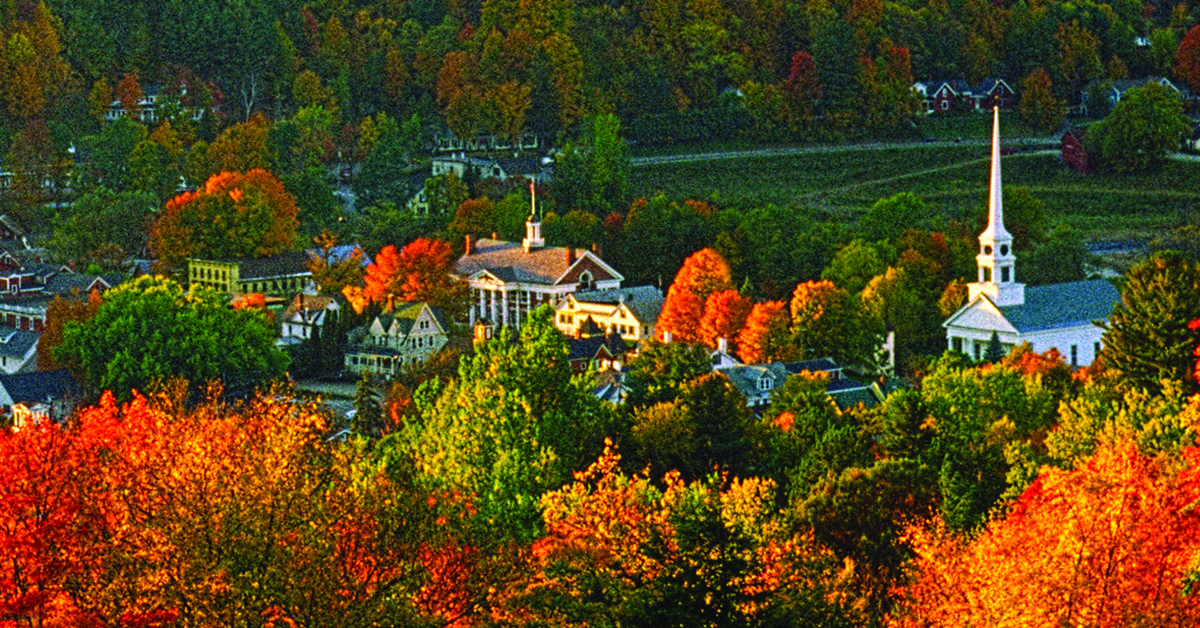Money is pouring into commercial real estate developments in the New England Region, with both new construction projects and historic redevelopments in progress. There’s a focus on creating large mixed-use and outdoor community spaces to transform empty or neglected properties.
These even go as far as redeveloping entire districts. In Somerville, Massachusetts, 20 acres of the Union Square neighborhood is being redeveloped as part of a master plan. Centered around a new light rail station to connect the area to downtown Boston and beyond, the $2 billion project will bring 2.4 million square feet of space crafted for companies in the life sciences, technology, arts and innovation sectors.
Only 2 miles away in Boston’s Allston neighborhood, home of Harvard Business School, a 9-acre mixed-use development is underway. The Enterprise Research Campus will include two new laboratory buildings; hundreds of apartment units; hotel, retail and restaurant space; and a sustainably built conference center.
Outside of Boston, smaller developments are underway. On the Massachusetts border with New Hampshire, the city of Haverhill is redeveloping 3 acres of historic buildings and vacant property in its downtown. Under the tutelage of preservation society Historic New England, Haverhill is slated to gain new retail and commercial space, live-work spaces for artists, housing and a hotel.
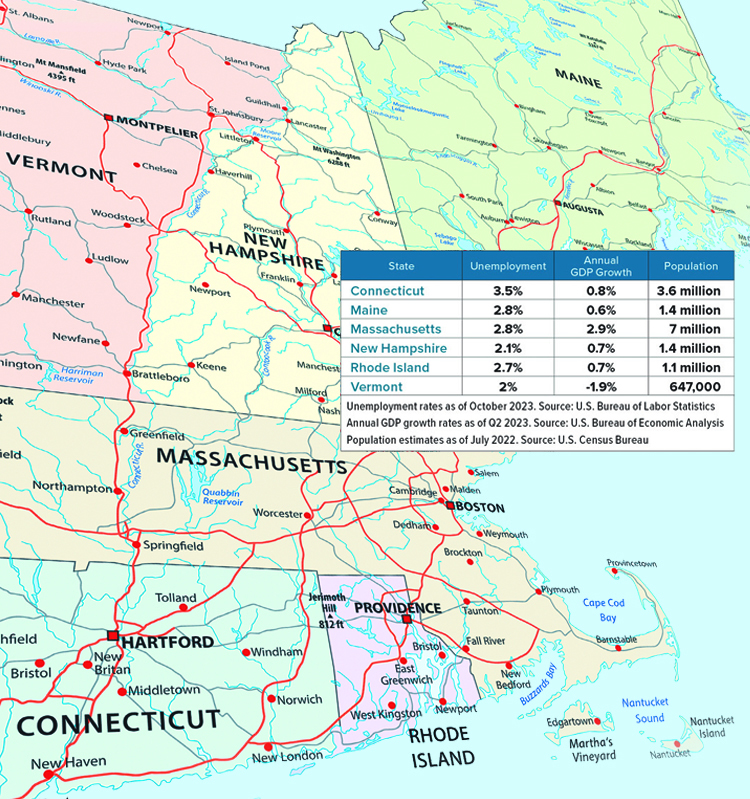
Rise Development is planning a $100 million movie and TV studio in the Boston suburb of Braintree in its effort to create a “Hollywood East.” And in Concord, New Hampshire, nearly 1,000 units of housing are being planned for a 135-acre, mixed-use development along the Merrimack River.
Small towns are also getting in on adaptive reuse. In rural northern Vermont, the town of Hardwick is saving its iconic Yellow Barn. The historic building will be transformed into retail space, with a new food and agricultural business center to be constructed next door, providing community cold-storage and warehouse space for farmers.
The overall economy in New England was strong in 2023, with low unemployment rates and stable gross domestic product (GDP) growth. According to August 2023 data from the Federal Reserve Bank of Boston, overall employment in New England has fully recovered from the COVID-19 pandemic.
The leisure and hospitality sector across these states is about 6% behind pre-pandemic levels. But unemployment rates are below the U.S. average across the board, with no state topping 3.5%. Vermont (2%) and New Hampshire (2.1%) had some of the lowest jobless rates in the country as of October. ●
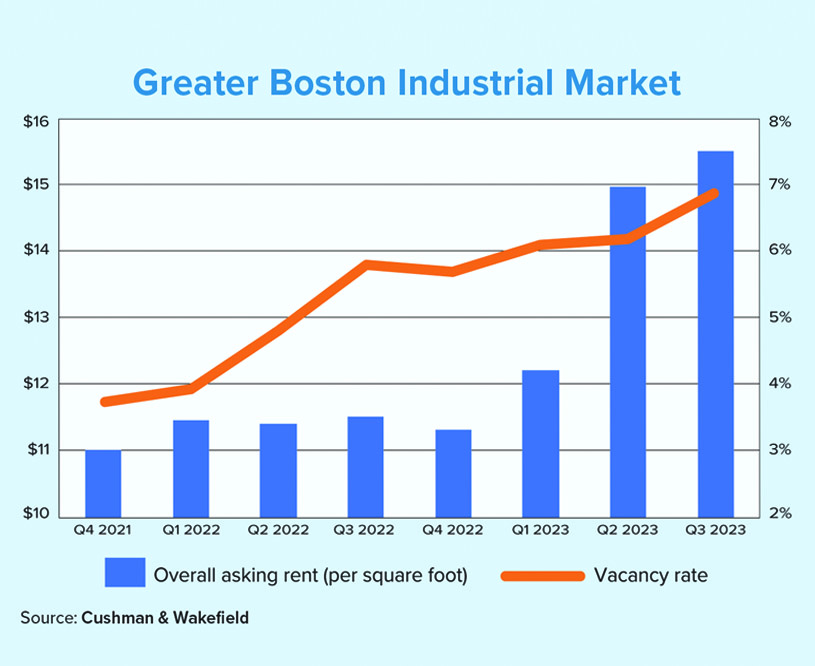
The vacancy rate for industrial properties in Greater Boston continued to climb in the third quarter of 2023, but net absorption rose sharply, according to Cushman & Wakefield. Vacancies reached 6.9%, partially due to a robust pipeline of new construction. Nearly 4 million square feet (msf) of inventory was delivered in the first three quarters of last year, with another 4.7 msf still under development.
Preleasing activity was slow at that time, with the pipeline only 17.7% leased. The impact is far from devastating, however, as Cushman & Wakefield predicted that even if the rest of the delivered inventory for 2023 went completely unleased, the vacancy rate would rise by a modest 60 basis points.
The 495 West submarket, encompassing Boston’s far western suburbs, saw the most marked improvement. The submarket accounted for 51% of Greater Boston’s total quarterly occupancy gains, lowering its vacancy rate by 440 basis points to only 2.2%.
What the Locals Say
The market is tough right now. The issue that we’ve seen on our end is not that rates are too high, it’s just that they went from historic lows to this level way too fast. It’s hard for business owners, now more than ever, to weigh purchasing over leasing.
Here in Boston, we see fairly drastic differences within neighborhoods. For instance, in the Back Bay, the office market has been strong. It’s insulated because it’s a highly desirable area with a live-work feel and a strong residential component. But the Financial District has been struggling and has seen high vacancy rates continuing after the pandemic. On the retail side, it’s similar. There are some areas that are doing well, with relatively low vacancies, whereas downtown — since the daily influx of workers is much lower than it was before — it’s harder for retail businesses to sustain themselves. So, there’s higher vacancy downtown.
Investors, developers and businesses do consistently want to be in Boston because there are so many industries and institutions located here. There are lots of highly regarded colleges and universities like Harvard, MIT, Boston University and others, as well as internationally recognized hospitals.
Life sciences are a big thing in Boston right now, with ground-up developments and office conversions. There’s a constant influx of people to the city, and on the investment side, we seem pretty well insulated from giant upturns and downturns.

Vice president of commercial
Cabot & Company
3 Cities to Watch
New Haven
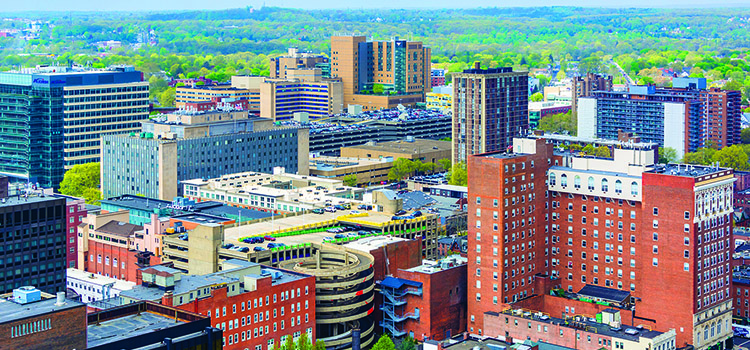
Connecticut’s second-largest city is home to nearly 140,000 people. Steeped in history, New Haven’s centerpiece is Yale University. The university and its attached hospital and medical system are the city’s largest employers, combining for about 45,000 jobs. Biotech is another key industry in New Haven, spurred by the redevelopment of former factories into a scientific research campus. Advanced manufacturing and food services are economically significant too.
Springfield
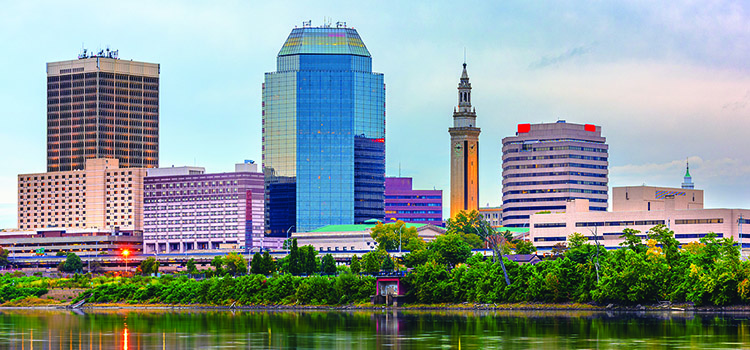
The “City of Firsts” is the third largest in Massachusetts and is famous for innovation. Springfield is the birthplace of basketball and of Dr. Seuss. It’s also the home of the first American-made automobile and the nation’s first military armory, an important facility during the Revolutionary War. Firearms manufacturer Smith & Wesson traces its roots in the city to 1856. Other major industries in the metro area include health care, aerospace and financial services.
Portland
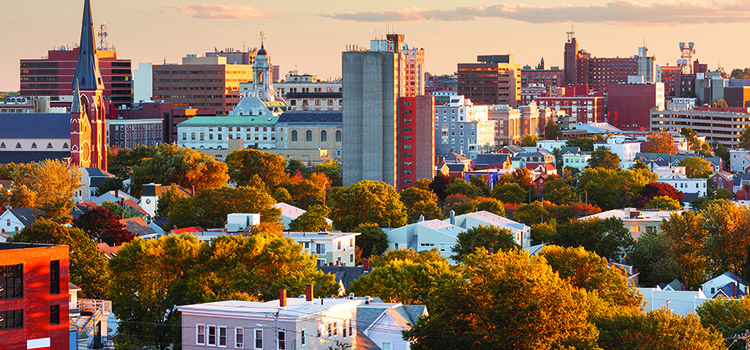
Artsy, outdoorsy Portland is Maine’s most populous city. Its metro area is home to 550,000 people. Originally a fishing and trading settlement, Portland still boasts a working waterfront in the heart of a trendy downtown. Portland has seen intense development interest in the past several years, including new housing, luxury hotels, a convention center, a 10-acre waterfront neighborhood, and the redevelopment of a famous downtown office building into modern mixed-use space.
Sources: Boston Real Estate Times, Business Wire, City of New Haven, City of Springfield, Connecticut by the Numbers, Connecticut History, Engineering News-Record, Federal Reserve Bank of Boston, Maine Business Magazine, National Parks Service, Patch.com, Portland Press Herald, Springfield Regional Chamber of Commerce, Visit Portland, WWLP-TV

